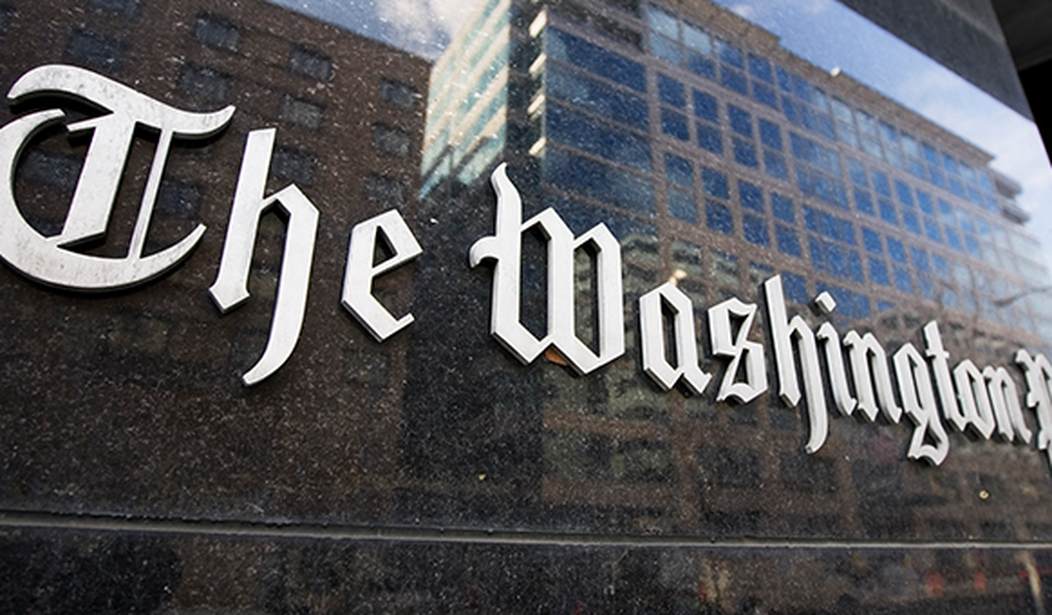We've seen this happen at other major papers. Earlier this year the LA Times had layoffs that impacted about 20 percent of the staff. The union held a walkout over the cuts which accomplished absolutely nothing. Basically they were demanding that the billionaire owner keep writing checks of up to a million dollars per month to keep the paper afloat despite there being no sign that it was ever going to make a profit at that staffing level. It was like watching spoiled adult children demand that mom and dad keep paying their rent.
Things are looking at least as bad at the Washington Post which reportedly lost $77 million over the last 12 months. And that wasn't even the worst part.
In a presentation to employees on Wednesday morning, Post publisher Will Lewis painted a stark picture of The Post’s finances, revealing that the publication has lost $77 million over the last year and has been bleeding digital readers for several years. “To speak candidly: We are in a hole, and we have been for some time,” he said.
Still, Lewis expressed optimism about The Post’s long-term outlook in rolling out the plan, which is intended to take the publication through the end of the year. “This is all repairable, all doable, particularly if we do it together,” he said...
The plan introduced Wednesday was informed in part by listening sessions with employees — Lewis acknowledged that some of his takeaways included that some employees find the publication “sad” and “slow” these days — and “Fix It” groups, in which employees helped brainstorm potential solutions to the company’s problems.
The Post won't have to layoff anyone immediately because it already reduced staff headcount by 240 (about 10%) with buyouts at the start of this year. Amidst those buyouts there was lots of staff upset about what kind of paper the Post wanted to be.
Scaling back staff while heading into a pivotal presidential election year seems like an especially ill-timed move given the Post’s traditional strengths in national politics and policy. Senior editors at the Post have been banking on heightened interest in the election to juice readership amid slowed traffic and subscriptions. At one point in the meeting, according to two staffers, investigative reporter Carol Leonnig said that over the years she’d been told that the National team was doing great work and that issues on the business side would be taken care of, only for the problems to persist.
In November, I reported how staffers were seeking clarity about the Post’s future, with the central question being, as one staffer put it, “What do we want to be?” The question remains, and was at the heart of the National meeting. Congressional reporter Paul Kane got the room’s attention when he questioned the paper’s editorial strategy by reading the top headlines on the Post homepage off his phone: a hodgepodge about everything from national security to how to stop worrying about FOMO. No offense, he said, per two staffers, but there was great journalism being buried on the homepage. Veteran political reporter Dan Balz also chimed in to ask about the paper’s sensibility and character—what message was the Post trying to send about what it stands for?
I don't know who the Post wants to be but as a subscriber who looks at the paper at least 6 days a week I can tell you who they are. They are the voice of the Democratic Party in print. They cater almost exclusively to the left and there are rarely any surprises in the partisan outlook of their daily output with the exception of the editorial board which isn't bad. Apart from that, the paper is downright dour most of the time and attracts nothing but left-wing commenters who have clearly honed their skills shouting down opposing viewpoints on social media. The Post is an unpleasant place and I'm not surprised they are having a hard time selling it to subscribers. I'd love to cancel my own subscription but I feel obligated to have it since, as I said, it's the voice of the Democratic Party.
For comparison's sake, the San Francisco Chronicle is a much more lively and interesting paper. It's clearly left-leaning and roots for its very progressive hometown but it also isn't afraid to report that things a) aren't going well or that b) Democrats have done bad things. Compared to the stilted, state media feel at the Post it's a breath of fresh air. Seriously, the Post is about as monotone and dull as the People's Daily. It has the same feel of being made to order for the party.
So the plan to fix the Post's problems is some sort of new subscription model plus AI integration promoted heavily by the company's CTO:
The pyramid, aimed at helping employees visualize new business opportunities, showed the traditional subscription membership stacked along with new subscription and payment offerings for readers...
"We think that we’ve been a one-size-fits-all organization for too long, so we’re excited to create a new set of consumer and professional products that better meets the needs of our multi-faceted audiences," Karl Wells, chief growth officer at The Post, explained...
"I totally get that there is a huge fear of A.I. everywhere," he said. "But I want us to go beyond the fear. The way I see us operate is we have A.I. everywhere. We have A.I. in our newsroom; we have A.I. with our consumers; we have A.I. in the business… Start thinking of it as a copilot."
Anything's possible I guess but I don't see how these things are going to solve the Post's problems, which have more to do with the tone of the output than the price. My guess is we'll be hearing about another round of layoffs early next year unless Jeff Bezos decides he likes pouring his money down a hole.








Join the conversation as a VIP Member